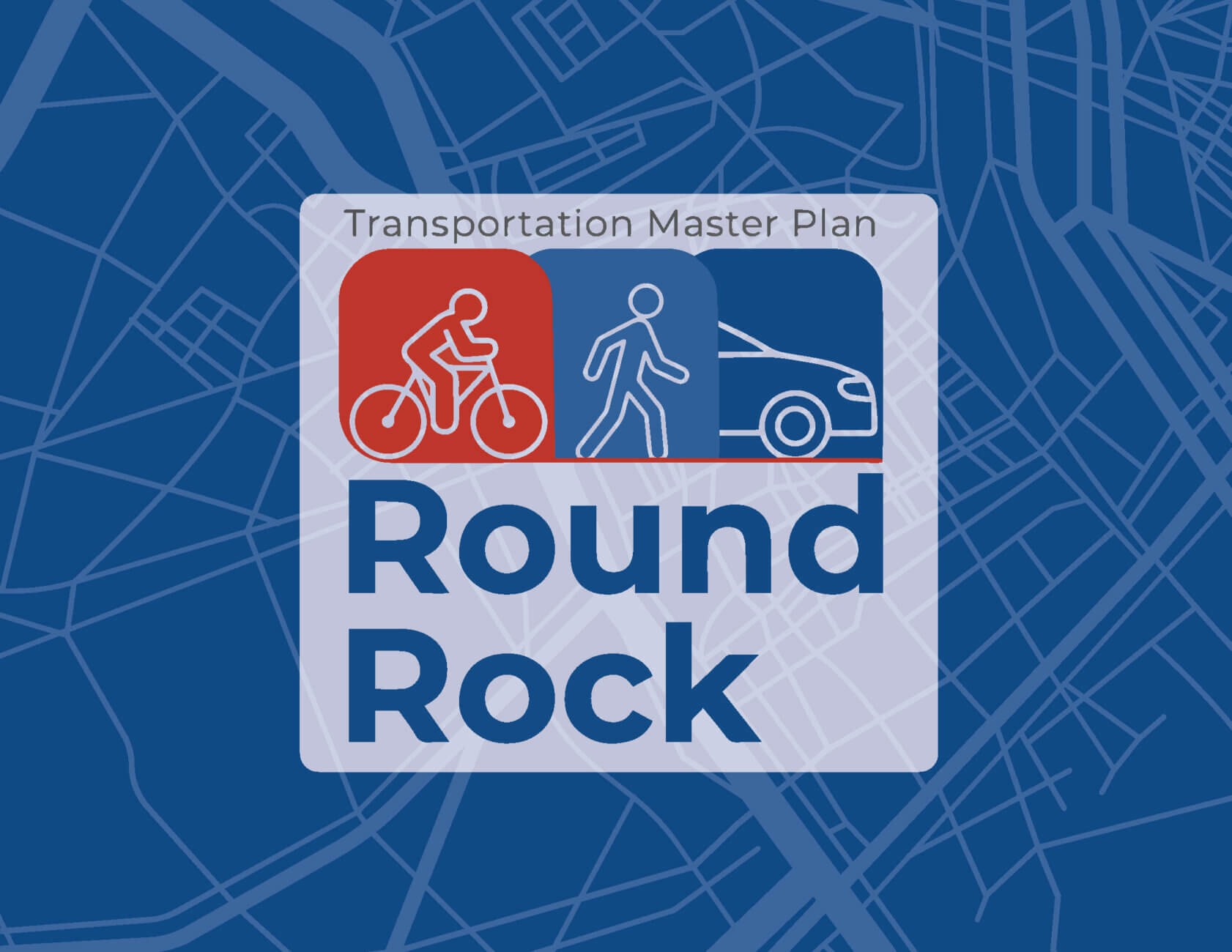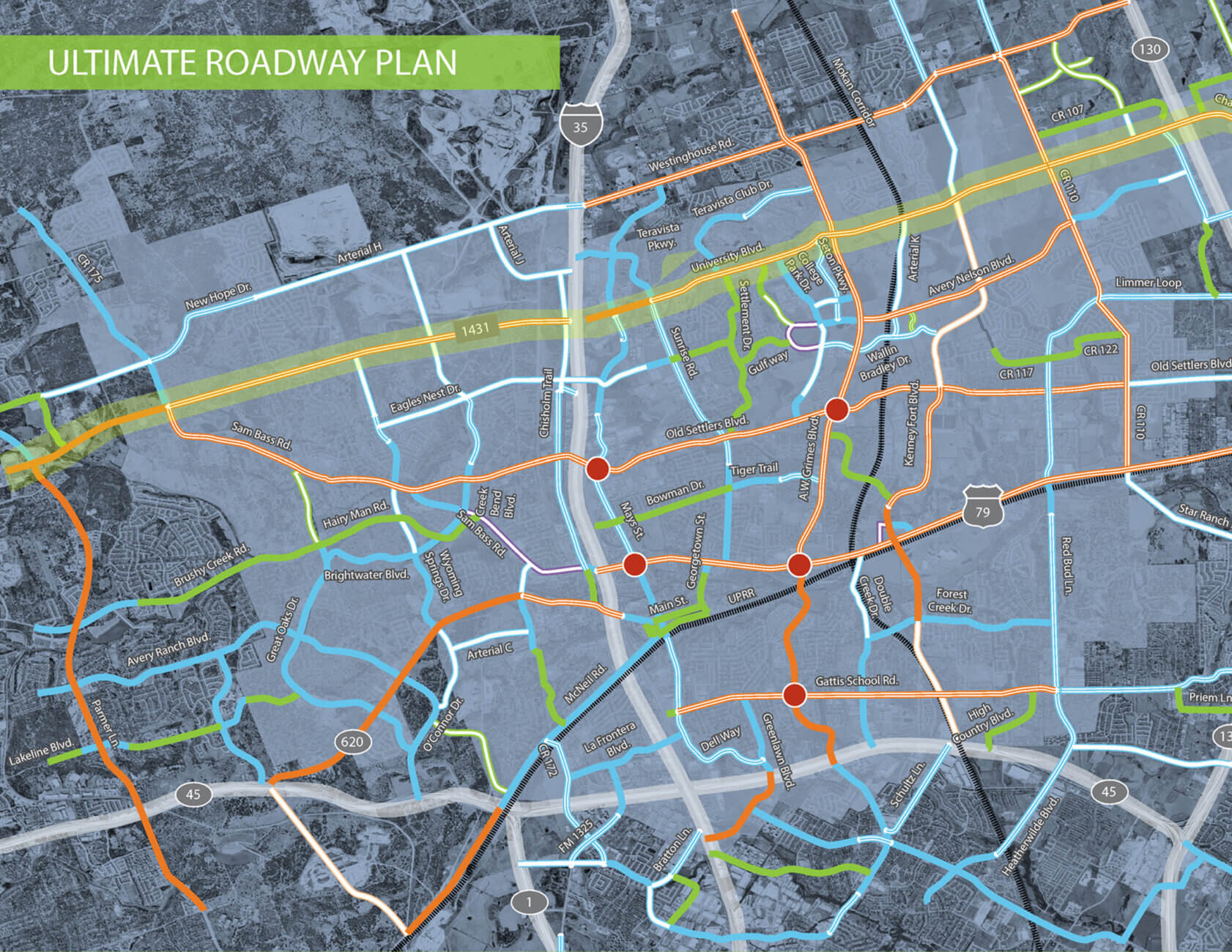About the Plan
The 2023 Transportation Master Plan serves as the guiding vision for transportation investment, policy and future needs in Round Rock for the next 20-30 years. The document builds on the City’s strategic goals, past planning efforts (including the 2017 Transportation Master Plan), and aligns transportation needs and recommendations with other City planning efforts. The following page includes goals and objectives that served as guiding principles in development of the master plan.
Some of the significant recommendations and elements of the master plan include the following:
- Ultimate Roadway Plan, a long-term plan for the City’s roadway network.
- Recommended street cross sections and right-of-way requirements.
- Identification of high priority projects for roadways, trails and intersections.
- Collector street requirements recommendations.
Below are links to the Master Plan, as well as the Ultimate Roadway Plan map.
About the Transportation Master Plan
In order to meet the transportation demands of population, employment and economic growth, the City developed its first major Transportation Master Plan in 2017. The Transportation Master Plan encompasses the transportation system within the city limits as well as the extraterritorial jurisdiction (ETJ), with an emphasis on connectivity to the greater region.
The Transportation Master Plan for Round Rock establishes a strategic framework for the city’s transportation system, closely aligned with the City’s overarching vision for growth and development set forth in the Round Rock 2030 comprehensive plan. This master plan is designed to reflect and support the key policies of Round Rock 2030, which calls for “improving the function and appearance of transportation corridors while ensuring safe pedestrian and bicycle travel where possible.”
Plan Goals and Objectives
- Integrate trails and transit into the plan.
- Increase safety measures in transportation planning.
- Provide direction on updated policies and design standards.
- Improve bottlenecks in the city.
- Preserve right-of-way for full network build-out.
- Plan for collectors and improved connectivity requirements.
Funding the Plan
The Transportation Master Plan represents a significant investment in transportation, with nearly $2 billion in projects identified to be able to serve Round Rock at build-out.
The City of Round Rock funds road projects through a variety of funding sources and strategies:
Economic Development (Type B) Funds: Since 1997, voters have approved the use of Type B sales tax funds for transportation capital projects and other economic development spending.
Roadway Impact Fees: The City has initiated a roadway impact fee program to manage the effects of development on infrastructure. Developers can either construct roadways in lieu of paying a fee or pay fees that are then used to reduce the city’s debt burden. These funds are tied to specific service areas and must be used locally where they are collected.
State Funding: The Texas Department of Transportation (TxDOT) identifies funding through various methods and funding categories for projects annually. The Unified Transportation Program, which included $100 billion in funding in 2023, is an important source for potential safety and operational improvements. TxDOT also supports pedestrian and bike projects.
CAMPO: The Capital Area Metropolitan Planning Organization (CAMPO) coordinates regional transportation planning with counties, cities, regional mobility groups and the Texas Department of Transportation. Round Rock has been successful in securing significant funding from CAMPO in recent years to expedite road projects.
Williamson County: The City has partnered with Williamson County on various projects, particularly those in the greater Round Rock area, generally through the County’s bond project programming.
In 2019, an initiative called Driving Progress was started to allocate $240 million in spending on transportation projects identified in the 2017 Master Plan, funded through Certificates of Obligation (CO) bonds starting in 2020.
Transit Development Plan
Round Rock’s Transit Development Plan, finalized in 2022, focuses specifically on public transportation, aiming to make it a more viable and attractive option for residents and visitors. It is distinct from the broader Transportation Master Plan, which encompasses all modes of transportation infrastructure and long-term strategic planning for the city’s growth.
Despite their different scopes, the transit plan complements the Transportation Master Plan by addressing the public transit component, ensuring that both plans work together to improve mobility, connectivity, and the creation of desirable destinations within Round Rock.




